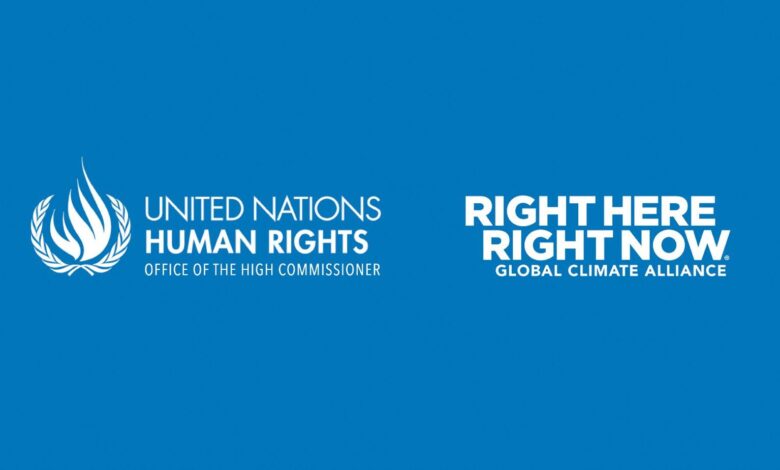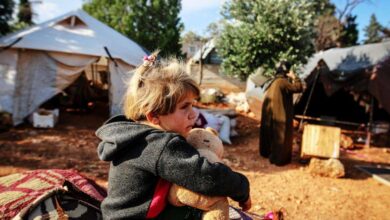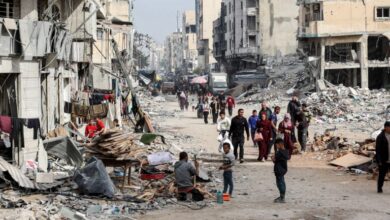The Recording Academy Partners With United Nations Human Rights-Supported Global Music Initiatives To Promote Social Justice Around The World

The music industry isn’t immune to natural disasters. From wildfires and floods to earthquakes and tornadoes, recording studios are as vulnerable as homes and traditional businesses — and when the worst happens, the loss extends beyond four walls. Entire creative lifelines are at stake: unreleased masters, rare gear, archives, the ability to keep working at all.
That reality has been driven home over and over again, most recently with the devastating wildfires that swept through Los Angeles in early 2025. During the GRAMMY Awards telecast in February, viewers contributed nearly $10 million to fire relief efforts, part of a larger $26 million raised by the Recording Academy and MusiCares during GRAMMY Week. Those funds have already provided critical support to more than 3,000 music professionals in Los Angeles and, through partnerships with local organizations, directed nearly $4 million in aid to those hardest hit. The message was clear: When disaster strikes, the music community rallies to help its own.
For Colorado-based mastering engineer and San Francisco Chapter Board Member Anna Frick, disaster preparedness became personal. During a recent wildfire season, she found herself evacuating her studio multiple times in just a few weeks. “One night, I joined a Producers & Engineers Wing call and casually mentioned I’d had to evacuate again,” she recalls. “Pretty soon, everyone was trading tips; some had been through it, others had never considered it, but everyone was soaking it all up.”
That moment sparked an initiative within the Recording Academy’s Producers & Engineers Wing: consolidate real-world lessons, FEMA guidance, and insurance insights into one accessible resource. The result is Studio Emergency Preparation Recommendations 2025, a new guide designed to help recording studios of all sizes — from home setups to multi-room commercial facilities — prepare for disasters and recover afterward.
GRAMMY.com sat down with Frick and Maureen Droney, Vice President of the Producers & Engineers Wing, to talk about the hard truths of studio preparedness and how protecting these spaces has impact beyond music.
Why was it important for the P&E Wing to publish this guide now?
Maureen Droney: This really came from Anna. She brought it up after her own experiences, and it sparked something bigger for all of us.
Anna Frick: On one of our P&E Wing committee calls, I mentioned having to evacuate because of wildfires, and people started sharing what they’d done in disasters. Some had systems in place, others admitted they’d never thought about it. That conversation showed me how widespread the gaps were, and how important it was to put all of these tips together in one place, and also bring in outside resources, so nobody was starting from scratch when disaster hits.
Did you have a plan already in place at that time?
Frick: Luckily, previous studio, the studio owner was a volunteer firefighter. He’d already put together a detailed plan: how to power everything down, what to grab, even small steps like sealing vents or pulling down curtains. When he got called away to fight a fire, I was the one responsible for carrying it out. Having that kind of structure showed me how valuable it is to think things through before you’re in crisis mode. Most studios don’t have that kind of built-in knowledge, which is exactly why this guide felt necessary.
Did you actually run practice drills?
Frick: Definitely. Living in Colorado, we’re always under threat of wildfires. I practiced how to power down the studio from the panel in the right order so sensitive gear wouldn’t get damaged. That kind of muscle memory is important. Disasters are stressful; you need to be able to act quickly without second-guessing.
Droney: Absolutely. During one of the L.A. fires this year, I had my go bags already packed in the car. But when it looked like I might really have to leave, I started piling in other things —papers, things I hadn’t thought about. That first round was almost like a rehearsal, and it made me realize what I’d missed.
What makes studios different from other businesses when it comes to disaster prep?
Frick: We’ve got gear that’s not only expensive but irreplaceable. Some of it’s vintage, some is rare or custom. And then there’s the work itself: Clients are trusting us with recordings that don’t exist anywhere else. I want to make sure my clients know that their work is safe. I’ve known people who tried to load an entire studio into a car during an evacuation. Without a plan, you’re just grabbing what you see.
How prepared do you think most studios actually are for disaster scenarios?
Frick: I think we all believe we’re ready, until the moment comes. Then you realize you forgot something crucial. There’s always more you could do, but you also can’t run a studio in full “disaster mode” all the time. These best practices are about finding balance. You might not keep all your racks off the floor every day, but you know to move them if flooding is even a remote risk.
Droney: That’s exactly it — you don’t need to do everything at once. It’s more about awareness and gradual steps.
One of the distinctions you draw in the document is preparing for hazards versus preparing for consequences. What does that mean?
Frick: It’s easy to focus on the hazard itself — fire, flood, earthquake — but the real pain often comes afterward. You might lose your studio and your gear, but you’ve also lost your income. Preparing for consequences means thinking about recovery: knowing your insurance procedures, understanding how to support your team, and planning for how to keep business moving while you rebuild.
Droney: And Anna thinks this way because she’s a business owner. For a lot of people, especially with home studios, that side isn’t top of mind. This document helps bridge that gap.
Let’s talk specifically about home studios. How do these recommendations apply to them?
Droney: One of the most important things is backups — not just one hard drive in your studio. Follow the “three different places” rule, whether that means the cloud or drives in other locations. That applies to everyone, but it’s especially critical if your home is also your business.
Frick: When your home is your studio, decisions in an evacuation become harder. Are you grabbing family photos or your tube compressor? You can’t save everything. Having reliable backups and knowing your insurance coverage — what your homeowner’s policy does or doesn’t cover — makes those choices less devastating.
You also had input from FEMA as you were shaping this doc.
Frick: One of my close friends works for FEMA and gets deployed to disaster zones. She pointed me toward resources and helped us think about how to apply them specifically to studios.
FEMA offers a huge amount of information, but it’s not tailored for the music business. We layered on the things we would think about in our studios: rare instruments, vintage compressors, unreleased projects, backup media.
Insurance is notoriously complicated. What can studio owners do to minimize headaches?
Droney: Honestly? Read your policies. Have a conversation with your broker. Most of us don’t. Understanding the big picture of what’s covered and what isn’t saves a lot of frustration.
Frick: And work with someone who understands music. Studio insurance is very different from standard business insurance. You need a carrier who knows the right questions to ask — liability if clients are on site, coverage for specialized equipment, inventory documentation. I’d call it “trust but verify.” Keep a detailed inventory, and make sure your provider really understands your needs.
We’ve been talking about practical issues, but the guide also addresses the emotional side. How should studio owners think about mental health and team care after a disaster?
Frick: This industry is already tough on mental health. If your studio is also your home, the loss is doubly personal. Having resources lined up matters. MusiCares is incredible — they can help financially, but also with counseling and support groups. That’s as important as protecting gear.
Droney: Absolutely. In Los Angeles, after the recent wildfires, people lost not just their studios and homes, but things like grand pianos, instruments that were emotional anchors. Having go bags and documents ready helps, but knowing there’s a safety net for your emotional health is just as critical.
Should artists and labels also be asking questions about a studio’s preparedness?
Frick: Definitely. As an artist, if you’re leaving instruments or masters in a studio, you absolutely have a right to ask how they’re being protected. You would expect that from your label and your management, so you should also expect that from your studio. It’s part of being a responsible creative. And if you don’t like the answers, you can ask for accommodations — or choose another studio.
Droney: And beyond that, there’s a basic education piece. Archiving practices are a big part of our Delivery Recommendations for Recorded Music Projects; in the outreach we do, we know that lot of artists, especially younger ones, don’t think about backing up files. Some assume streaming services are storing their masters, which they aren’t.
Frick: Streaming services are not your archive. If they shut down tomorrow, your work is gone. You can’t rely on someone else to take care of your masters. You have to do it yourself.
Droney: Exactly. That’s why engineers and producers are so vital — they know these things and can help artists protect themselves.
For people who want to dive deeper into this conversation, where can they learn more?
Droney: We’ll be hosting a panel at the Audio Engineering Society Convention in Long Beach focusing on disaster preparedness for studios and how to apply these best practices. Then in November at Music Expo 25 in San Francisco, we’ll continue the conversation with another panel. Both will bring in insurance specialists and other experts to answer questions and give people practical steps they can act on immediately.
What’s the first thing you hope people do after reading this guide?
Droney: I hope they actually read it! Even filling out the simple worksheet inside will put you in a better place than before.
Frick: We designed this guide to be practical. It’s not pages of theory—there are one-sheets, checklists, blanks to fill in. Do even part of it, and you’ll be better prepared than you were yesterday.




